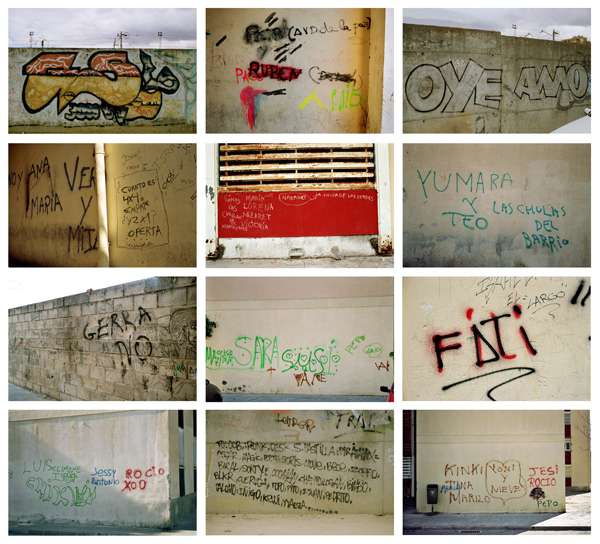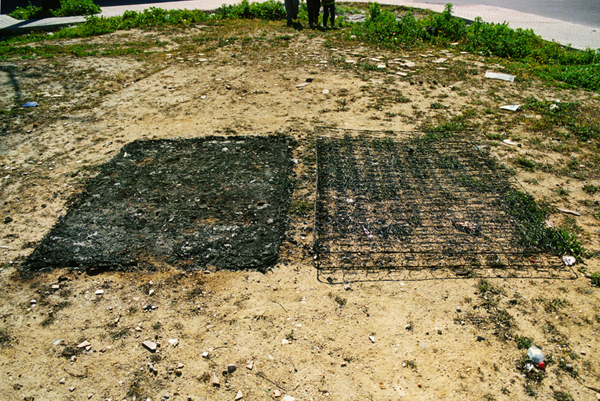
Cuervo, 2005. Colour photograhy on aluminium. 160 x 125 cm. Edition of 6. |

Cuervo hablando por el móvil, 2005. Colour photography on aluminium. 50 x 45 cm. Edition of 6. |

Ciudad habitada (polyptych), 2005. Colour photography framed on aluminium. 30 x 45 cm. each, 101 x 196 cm. total. Edition of 6. |

Palabra de honor (polyptich), 2005. Colour photography framed on aluminium. 30 x 45 cm. each, 135 x 145 cm. total. Edition of 6. |

Hombres intermitentes, 2005. 4 light boxes, stroboscopic effect and duratrans. 260 x 130 x 50 cm. each. Edition of 3. |

Video Club, 2005. Video projection. 41' 40". Edition of 8. |

Corshón quemao, 2005. Colour photography on aluminium. 125 x 185 cm. Edition of 6. |
Increasingly, my interest is being directed towards an anthropological study of our surroundings as a method of analysis for understanding the social development of our communities. However, at the same time I am realising the difficulty of this endeavour.
The city rises in an inherited pattern that has adapted to the needs of the social body, in a constant confrontation of interests. Just like a palimpsest, the marks of human activity have shaped the story of our cities, allowing us to do a study, closely related to territory, into the identity of these towns. However, technological development has brought analysis method into crisis. A place could be defined as a place of identity, both relational and historical, but the concept of the place is substituted in practice for other concepts closer linked to technology.
In this work, I try to highlight the light and shade that emerges from the tension of these two intersecting extremes: an identity linked to a solar time of traditions that restrains us to a territory – that almost doesn’t even exist anymore -, and a new identity exposed to a technological world with its logic of inclusion/exclusion and the violence that is generated by this situation.
I made this photographic and video piece in a neighbourhood in Seville called Las 3.000 Viviendas. The neighbourhood was inhabited by a modest population that had been relocated a few decades ago to a living complex that forms part of a peripheral district, eager to be integrated into the imaginary collectiveness of the city and overcome the problems of marginality.
In this confrontation, the individual runs the risk of disappearing if they don’t reinvent themselves: in this sense, my main priority is to make them visible.
Juan Carlos Robles
Madrid, April 2005

